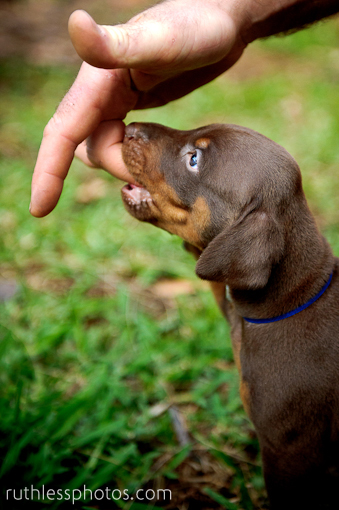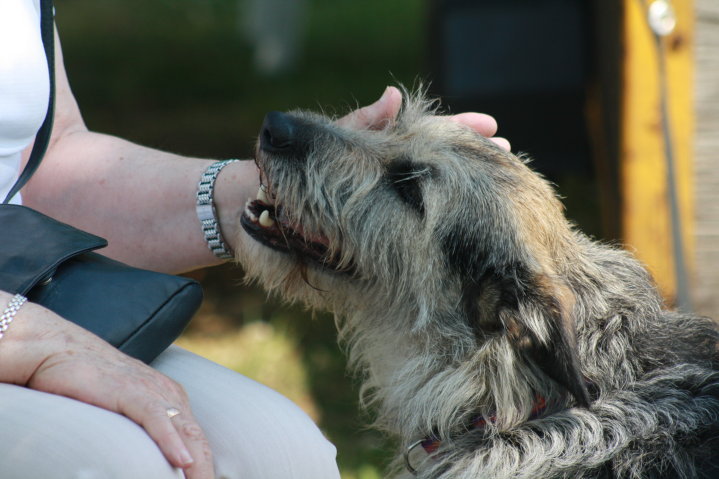Lure Reward Training
This post is part of the series in response to Dunbar’s 2012 Australian seminars. See index.
Dunbar promotes lure-reward training. This training uses a lure in order to accomplish a behaviour, and a reward to communicate the desirability of the behaviour lured.

Even young puppies can be lured by food on fingers, or even the sucking reflex itself. Photo © Ruthless Photos.
The Steps of Lure Reward Training
Any behaviour we can teach on cue by a 1234 process in lure/reward training. The 1234 steps are:
1: Request (i.e. use the cue – e.g. say “sit”)
2: Lure (i.e. get the behaviour – e.g. use food to get the dog’s nose up and bum down)
3: Response (the dog performs the behaviour)
4: Reward the dog
1,3,4 is always clear, but the lure to get a behaviour (2) may need some creativity.
There may also be several lures for one behaviour. If this is the case, they should be ranked from most desirable to least. For example, if you were training a dog to eliminate on cue, you could ‘lure’ the behaviour by confinement (i.e. putting the dog in a crate for a period of time) or by an olfactory lure (pee smell). It’s probably easier to crate your dog than to carry pee in a bottle, but it’s up to you to determine the best lure for you and your dog.
Once you’ve got the behaviour, you can start to progress through the stages of luring. Lures should be phased within a few repetitions, and rewards should become ‘life rewards’ instead of extrinsic rewards in a brief period of time.
The stages of reward training is phasing out, first, the lure and, second, the reward, and then enforcing compliance (without pain).
Stage One – Phase Out the Lure Continue reading



